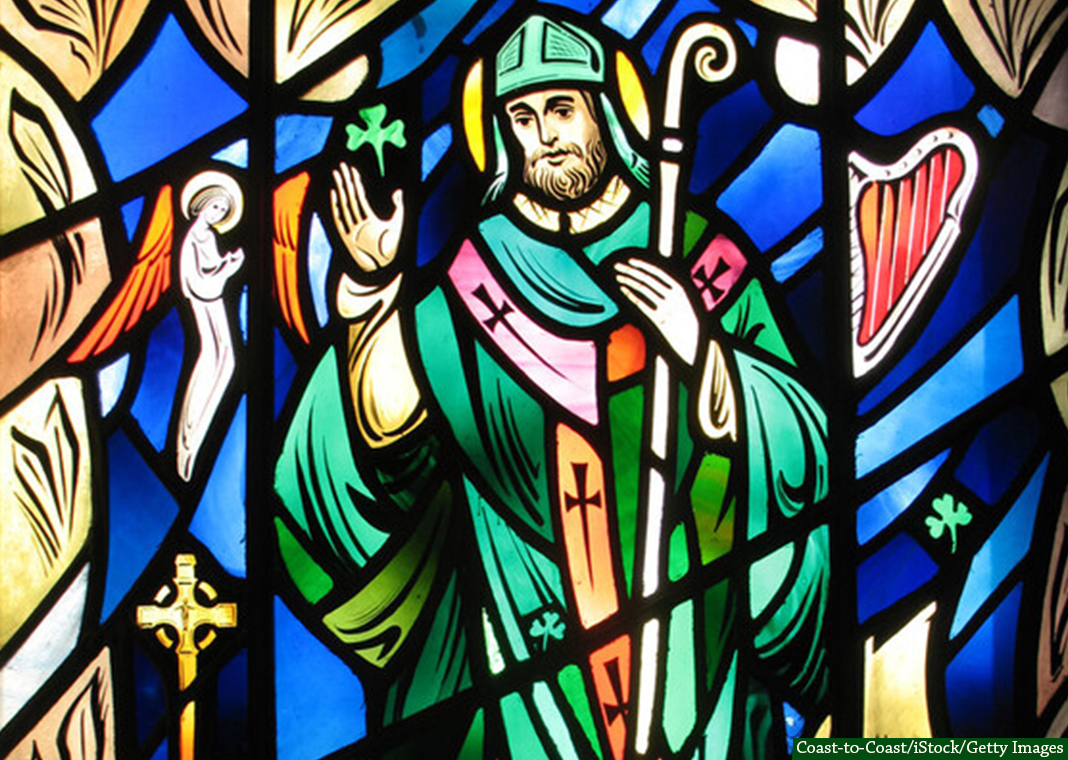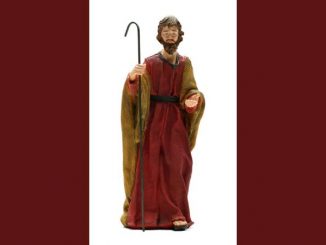
Having grown up in Ireland for the first 23 years of my life, I have a simple request: Stop the St. Patrick’s Day madness! For the love of St. Patrick, it is not Paddy’s Day (or Patty’s Day, which is even worse), but Saint Patrick’s Day. Some of the traditions that I see today associated with St. Patrick’s Day are so devoid of meaning to be almost comical. In Ireland, we do not celebrate St. Patrick’s Day by:
- leaving out “leprechaun traps” to catch leprechauns,
- leaving out gold coins for said leprechauns, or
- eating leprechaun-themed colorful food or candy.
The ways that we celebrated St. Patrick’s Day in my family had nothing to do with leprechauns:
- We went to Mass and enjoyed a wonderful meal cooked by my mother: lamb or ham with cabbage, cauliflower, and carrots (for the colors of the flag of Ireland, which is green, white and gold) and usually topped off with a special dessert.
- We wore buttons with an emblem of a harp or shamrock on our clothing. Sometimes my mother would pin little pieces of shamrock, if she could find it, on our jumpers (sweaters).
- We attended a parade as a family. Afterward, we usually went to the pub (as a family) to enjoy some music, dancing, and food before my parents brought us home to bed before it got too late.
St. Patrick is one of Ireland’s best-known saints for good reason. Captured as a young boy, he tended pigs on a mountain known as Sliabh Mis, traditionally believed to be in the north of Ireland. He was mistreated as a slave, regularly beaten and badly neglected. Often starved by his captors, Patrick had to eat the food intended for the pigs that he slept beside each night. One night the Lord came to Patrick in a dream and urged him to leave his captors and head for the coast. At great risk to his life, Patrick did as the Lord instructed and found passage back to his native country, where he studied for the priesthood.
The Irish must have had a profound impact upon Patrick: after he became a bishop, he asked to be sent to minister to them, the very same people who had once enslaved him. We have two primary sources of the life and public ministry of St. Patrick: his Confessions and The Letter to King Coroticus. I would urge you to read his Confessions and to meditate upon the words and prayers St. Patrick wrote, especially around his feast day. One of my favorite prayers is the Lorica, also known as St. Patrick’s Breastplate:
I arise today
Through God’s strength to pilot me;
God’s might to uphold me,
God’s wisdom to guide me,
God’s eye to look before me,
God’s ear to hear me,
God’s word to speak for me,
God’s hand to guard me,
God’s way to lie before me,
God’s shield to protect me,
God’s hosts to save me
From snares of the devil,
From temptations of vices,
From every one who desires me ill,
Afar and anear,Christ with me, Christ before me, Christ behind me,
Christ in me, Christ beneath me, Christ above me,
Christ on my right, Christ on my left,
Christ when I lie down, Christ when I sit down,
Christ in the heart of every man who thinks of me,
Christ in the mouth of every man who speaks of me,
Christ in the eye that sees me,
Christ in the ear that hears me.I arise today
Through a mighty strength, the invocation of the Trinity,
Through a belief in the Threeness,
Through a confession of the Oneness
Of the Creator of creation.
There are many rich and varied ways that you can celebrate the life of St. Patrick. You can renew your baptismal promises, pray some of St. Patrick’s prayers, enjoy a special meal together as a family, and give thanks to God who often pardons, in the words of St. Patrick, our “folly and carelessness.” Let’s set aside the folly of leprechauns and instead focus on celebrating this remarkable saint who had an incredible impact not only on the Irish people, but on the whole world. Let’s try and reclaim the dignity and sacredness of what used to be a beautiful feast day and honor Ireland’s most famous saint, a man who devoted himself tirelessly to prayer, fasting, and walking in faith with the Irish people.
There are ways to bring this day alive for children that involve creativity and fun, but we should not lose sight that this is a day to celebrate our Catholic identity. What are some ways that you celebrate St. Patrick’s Day?




Thank you so much, Julianne, for reminding us of what it’s really all about! I just wore my three leaf shamrock yesterday to the school, and reflected on the real life contributions/story of St. Patrick. And you’re right, the kids at school were making leprechaun traps….maybe when they grow up, with the grace of God, they will realize who he really was, for us. Thanks for reminding us of his now famous prayer too!
Being called a paddy as a young Irish Catholic caused me to get in to many a fight growing up I still find the term insulting and even with the grace of God dislike those people .